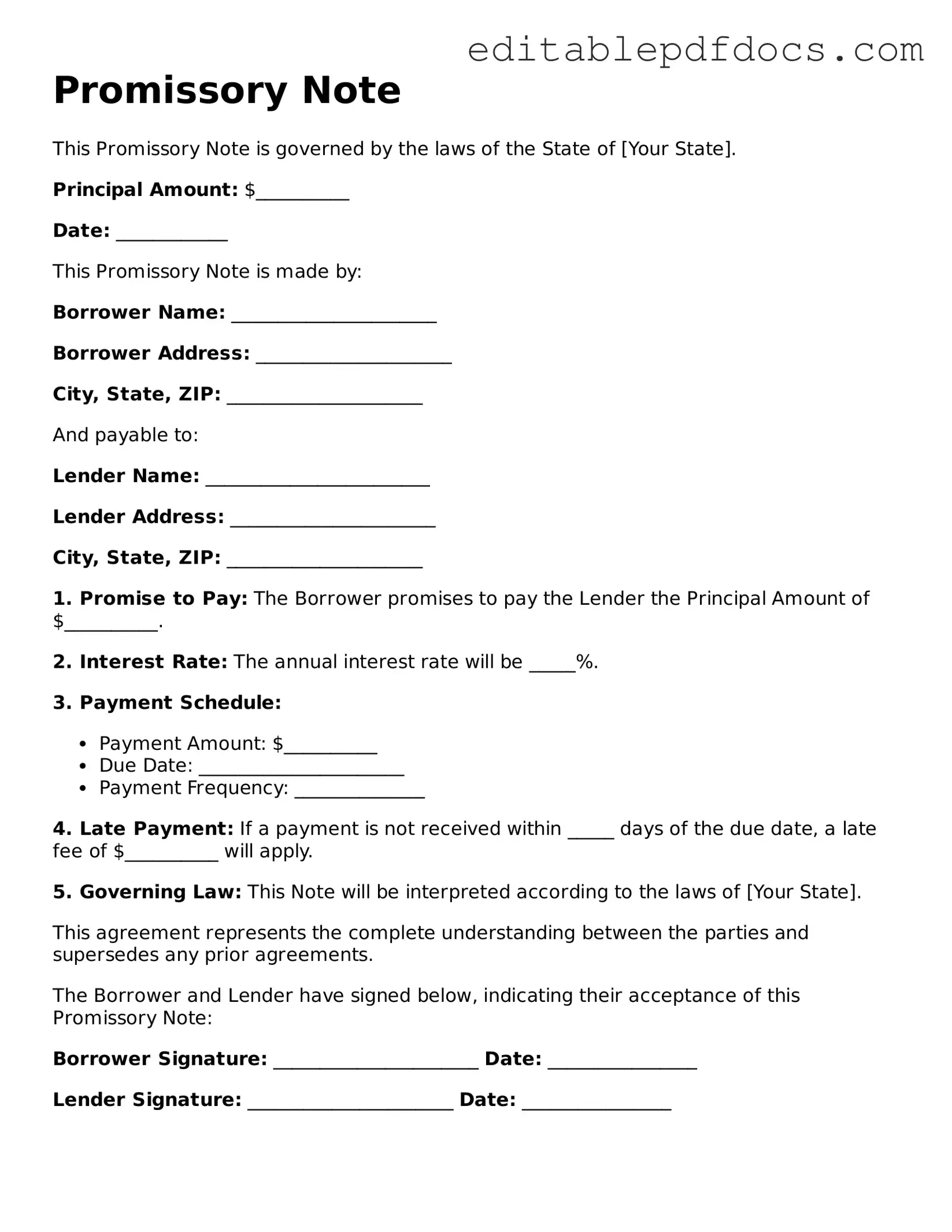Filling out a Promissory Note form can seem straightforward, but many people make common mistakes that can lead to complications down the line. One frequent error is not including all necessary parties. A Promissory Note typically involves at least two parties: the borrower and the lender. Omitting one of these parties can create confusion and potentially render the document unenforceable.
Another mistake is failing to specify the loan amount clearly. It’s crucial to write the amount in both numbers and words. For instance, writing “$5,000” and “five thousand dollars” helps eliminate any ambiguity. If only one format is used, it could lead to disputes regarding the actual amount owed.
People often overlook the importance of including the interest rate. If the note is meant to accrue interest, the rate should be clearly stated. Without this information, the lender may face challenges in enforcing the terms of the loan. It’s essential to check that the interest rate complies with state laws to avoid any legal issues.
Another common oversight is neglecting to outline the repayment terms. This includes specifying when payments are due and the method of payment. Whether it’s monthly, quarterly, or a lump sum, clarity in repayment terms helps prevent misunderstandings and ensures that both parties are on the same page.
Additionally, many individuals fail to sign and date the Promissory Note correctly. Both the borrower and lender must sign the document for it to be valid. Forgetting to include a date can also lead to complications, especially if disputes arise later regarding when the loan was established.
Lastly, some people do not keep a copy of the signed Promissory Note. It’s essential for both parties to retain a copy for their records. This document serves as proof of the agreement and can be crucial in the event of a dispute. Keeping a well-organized file can save time and stress if questions about the loan arise in the future.
